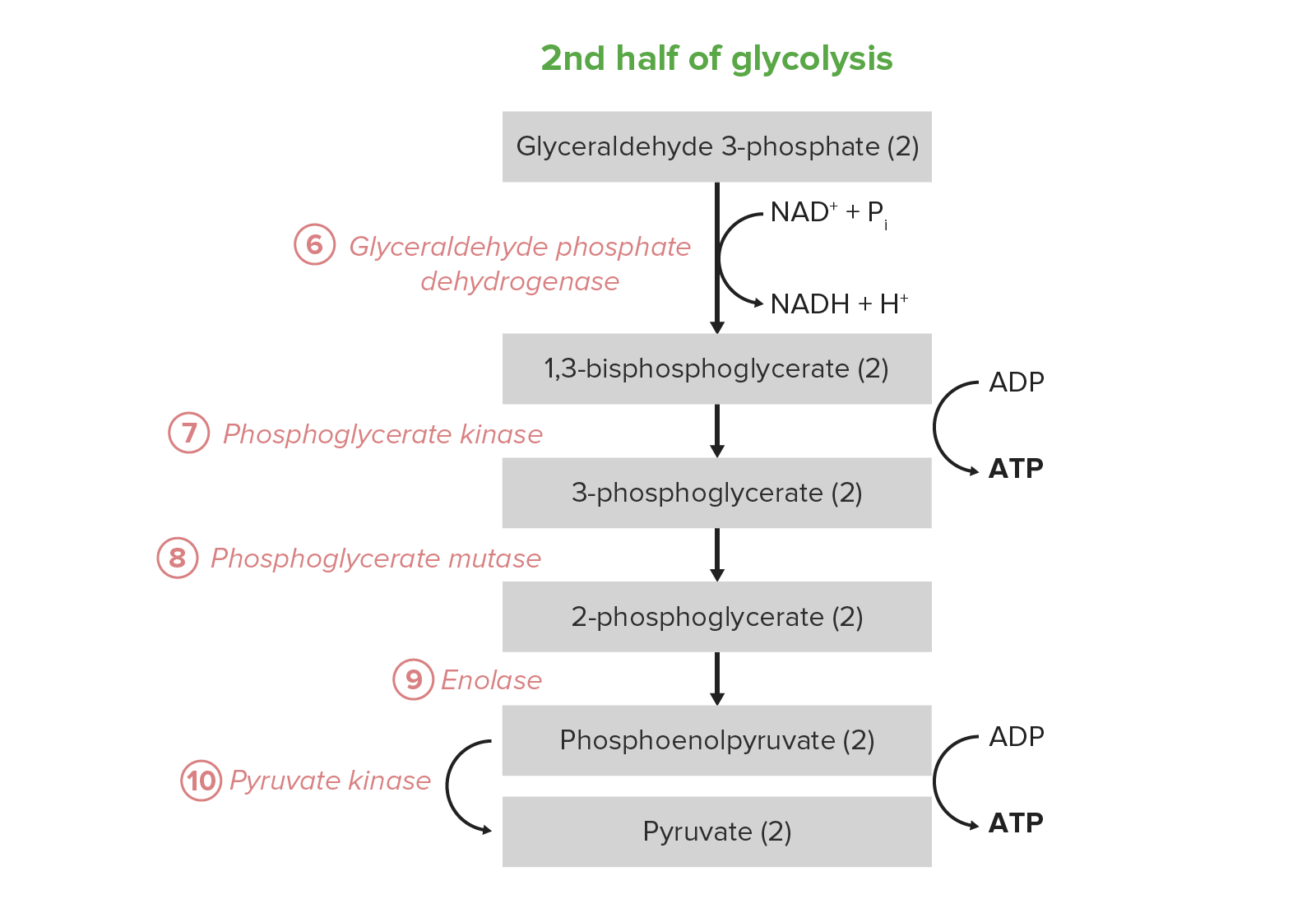Playlist
Show Playlist
Hide Playlist
Pyruvate Kinase & Summary Glycolysis – Glycolysis and Pyruvate Metabolism
-
04 Advanced CarbohydrateMetabolism.pdf
-
Reference List Biochemistry.pdf
-
Download Lecture Overview
00:00 it actually has to do a little dance around this pathway, and we will see how that happens in pathway of gluconeogenesis. 00:01 Now glycolysis is, as I said regulated by 3 enzymes and the third enzyme after hexokinase and PFK is this reaction. 00:11 Now I might seem odd that the last step of the reaction is regulated but there is very good reason why. 00:18 This reaction is inhibited by ATP. 00:20 ATP we have learned is a indicator of high energy. 00:24 Do we want glycolysis continuing if this cell has high energy? The answer is we don't. But once we make PEP, by God this thing gonna forward because it's pretty hard to stop such an energetic reaction. 00:38 Regulating a reaction that wants to go forward very bad is important. 00:43 Inhibition of this enzyme by ATP is a big consideration. 00:48 Now another thing that's important to alanine and amino acids, why is that in here. 00:53 Well pyruvate is readily converted into alanine. 00:56 An excess of alanine indicates you probably have too much pyruvate to begin with. 01:01 Now this enzyme is the enzyme that I described before that was activated in that push pull reaction of aldolase. 01:10 As fructose-1,6-bisphosphate starts to accumulate, it will activate pyruvate kinase and what happens when you activate pyruvate kinase well by God PEP is gonna go to pyruvate. 01:22 Well then what's gonna go to PEP? 2-phosphoglycerate. 01:25 And what's gonna go to 2-phosphoglycerate? 3-phosphoglycerate. 01:30 Every reaction proceeding the pyruvate kinase reaction is gonna be pulled by activating this enzyme. 01:36 And what's activating it? The molecule that's activating it is the molecule that needs to get converted into glyceraldehyde-3-phosphate and dihydroxyacetone phosphate. It's a perfect setup. 01:49 The pushing and pulling reaction is signaling a head to say, "We need some help here guys" And that guy that's helping them is pyruvate kinase. 01:57 The enzyme is also regulated by phosphorylation. 02:00 You put a phosphate on this enzyme it can be turned off. 02:04 And so regulation as we will see is very important in considering how gluconeogenesis or the synthesis of glucose is important. 02:16 Okay so we have seen overall, that glucose plus 2 ADPs plus 2 phosphates plus 2 NADs gives an overall product of 2 pyruvates, 2 ATPs, 2NADHs plus the other things that you see here. 02:30 Remember we put 2 ATPs in to begin with, but we had 2 reactions at the end each of which generated an ATP and since they are doubled we generated 4. 02:40 2 in, 4 out, a net of 2.
About the Lecture
The lecture Pyruvate Kinase & Summary Glycolysis – Glycolysis and Pyruvate Metabolism by Kevin Ahern, PhD is from the course Carbohydrate Metabolism.
Included Quiz Questions
Which of the following is true of pyruvate kinase?
- It must be regulated in order for gluconeogenesis to function.
- It is inactivated by fructose 1,6 bisphosphate.
- It is activated by ATP and alanine.
- It is continuously active in gluconeogenesis.
Customer reviews
5,0 of 5 stars
| 5 Stars |
|
5 |
| 4 Stars |
|
0 |
| 3 Stars |
|
0 |
| 2 Stars |
|
0 |
| 1 Star |
|
0 |




